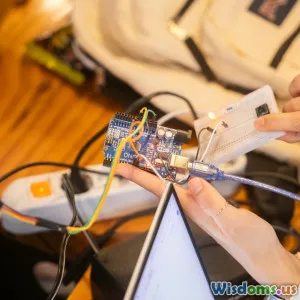
Will PyTorch Overtake TensorFlow in Industry Adoption
10 min read Exploring if PyTorch will surpass TensorFlow in industry adoption, analyzing trends, strengths, and real-world applications shaping forward-looking AI development. (0 Reviews)
Will PyTorch Overtake TensorFlow in Industry Adoption?
Artificial Intelligence (AI) development today relies heavily on choosing the right deep learning framework. Among the many options, TensorFlow and PyTorch have emerged as dominant forces, shaping research, production, and enterprise applications alike. As the AI industry rapidly evolves, a burning question has sparked intense debate: Will PyTorch overtake TensorFlow in industry adoption?
In this article, we'll explore the origins, strengths, weaknesses, and adoption trends of both frameworks. By unpacking real-world data, corporate usage, and developer preferences, we aim to provide a detailed and balanced outlook on the future trajectory of these two foundational tools.
The Origins and Philosophical Divide
TensorFlow, developed by Google and released in 2015, quickly established itself as a scalable, production-ready library that could power everything from simple research experiments to Google's own AI-driven services. Its static computation graph architecture initially presented a steeper learning curve but offered businesses predictability and performance.
On the other hand, PyTorch, introduced by Facebook's AI Research lab (FAIR) in 2016, brought a dynamic computational graph that synced more naturally with Python programming and the experimental nature of research.
Development Experience and Flexibility
PyTorch’s design philosophy emphasized ease of use and rapid experimentation, making it especially appealing to researchers who demanded an intuitive, Pythonic interface and straightforward debugging. This fostered widespread academic adoption, which in turn catalyzed booming community growth.
TensorFlow responded with TensorFlow 2.0, integrating eager execution and a Keras interface that lowered barriers by enhancing usability. Yet, PyTorch’s initial head start cemented its reputation as a flexible, developer-friendly choice.
Industry Adoption — Analyzing the Landscape
Market Presence and Enterprise Backbone
TensorFlow’s first-mover advantage and backing by Google immediately positioned it as the de facto industry standard, particularly in environments where high scalability and cross-platform deployment mattered:
- Google products: TensorFlow propels many core Google features, including Google Translate and Google Photos.
- Cloud Platforms: TensorFlow enjoys deep integration with Google Cloud AI infrastructure and supports comprehensive deployment pipelines.
In contrast, PyTorch's adoption in industry was initially more modest, favored primarily by researchers and startups engaged in quick iteration and innovation.
The Shift in Developer Preferences
Surveys from reputable sources like the 2023 Kaggle Machine Learning & Data Science Survey and Stack Overflow's developer reports reveal dynamic changes:
- In 2020, TensorFlow held roughly 65% framework popularity versus PyTorch’s 25%.
- By 2023, PyTorch closed the gap, surpassing TensorFlow’s share especially in research and startup ecosystems. Some reports indicate PyTorch’s usage approaching or even overtaking TensorFlow in active monthly GitHub repository stats.
These trends highlight a paradigm shift driven by evolving developer preferences focusing on speed, readability, and community support.
Key Drivers Behind PyTorch’s Rising Industry Traction
Simplified Model Development
PyTorch’s dynamic computation graph makes it easier to write and modify code on the fly. For many developers, this translates into significantly reduced development time and improved productivity.
Anecdotal evidence from companies like Tesla and OpenAI shows preference for PyTorch when developing advanced autonomous systems and research-intensive models due to its intuitive debugging and prototyping workflows.
Robust Community and Ecosystem
PyTorch's community has exploded exponentially, powered by many prominent research labs publishing their state-of-the-art models in PyTorch first or exclusively:
- Hugging Face’s Transformers, a library central to natural language processing, adopted PyTorch early and became a de facto standard.
- Facebook’s commitment continued with powerful features such as PyTorch Lightning and the TorchServe model serving framework, making PyTorch a formidable contender beyond research.
Improved Deployment and Production Support
Historically, one of TensorFlow's key advantages was easier path to deployment on mobile devices and cloud platforms. PyTorch has closed this gap with tools like:
- TorchScript: Allowing models to run in optimized, production environments statically.
- ONNX (Open Neural Network Exchange): Enabling interoperable model deployment across platforms.
- PyTorch Mobile, which simplifies deploying models on Android and iOS.
These advancements have bridged infrastructure gaps that previously favored TensorFlow.
TensorFlow’s Innovations to Retain Market Leadership
TensorFlow has not stood still. Several efforts are noteworthy:
- TensorFlow Lite: Tailored for edge devices, IoT, and smartphones, empowering on-device ML inference with efficient performance.
- TensorFlow Serving and Extended (TFX): Comprehensive production ML pipelines supporting model versioning, monitoring, and automated workflows—critical for enterprise-grade deployments.
- Collaboration with Keras: Making model building more accessible and modular.
Moreover, Google continues to push for better TPU (Tensor Processing Unit) compatibility with TensorFlow, an advantage for organizations relying on Google’s specialized hardware accelerators.
Real-World Industry Case Studies
PyTorch in Autonomous Vehicle Development
Companies such as NVIDIA and Waymo increasingly use PyTorch for autonomous driving research due to its flexibility in modeling complex perception systems. A 2022 NVIDIA report highlighted that PyTorch-powered models reduced prototyping times by 30%, enabling faster innovations.
TensorFlow in Healthcare and Finance
Institutions like Johns Hopkins University and JPMorgan Chase employ TensorFlow extensively for their healthcare imaging and fraud detection pipelines, respectively. The scalability and robustness of TensorFlow allow handling sensitive, large-scale data efficiently.
The Hybrid Approach
Many organizations adopt a hybrid model using both frameworks, choosing PyTorch for research and TensorFlow for production deployment, illustrating that the frameworks may coexist rather than enter a zero-sum contest.
Challenges and Considerations
Learning Curve and Talent Availability
TensorFlow's initially more complex ecosystem posed barriers; however, many industry teams have long-established TensorFlow skill sets. Transitioning to PyTorch requires investment in retraining.
Conversely, the growing number of PyTorch-trained engineers—from academia to industry—makes recruitment increasingly easier.
Ecosystem Maturity
TensorFlow's mature tools for visualization (TensorBoard), performance profiling, and comprehensive deployment pipelines offer measurable operational benefits that presently still challenge PyTorch’s ecosystem.
Corporate Ecosystem Lock-In
With Google Cloud deeply tied to TensorFlow and AWS and Azure expanding PyTorch support, cloud vendor ecosystems influence framework choices, often tipping the scale based on preferred infrastructure.
Future Outlook: Coexistence or a PyTorch Dominated Industry?
Industry momentum suggests PyTorch’s continual growth, propelled by innovation cycles and an engaged developer base. Frontrunners in AI research increasingly publish PyTorch-based models, accelerating adoption.
However, TensorFlow remains deeply entrenched in enterprises with critical scaling requirements and specialized hardware integration.
The future likely sees coexistence, with the choice shaped by project requirements, expertise, and infrastructure preferences.
Conclusion: Navigating the Deep Learning Framework Landscape
Will PyTorch overtake TensorFlow in industry adoption? The answer is nuanced.
While PyTorch has made significant strides, combining ease of use with growing production readiness, TensorFlow still commands an important presence due to its maturity, tooling, and large-scale deployment advantages.
As with all technological debates, the winner often depends on specific organizational needs, team skills, and target applications. For AI practitioners and enterprises alike, understanding these nuances and building expertise across both frameworks may prove the wisest strategy.
References
- Kaggle Machine Learning & Data Science Survey 2023
- Stack Overflow Developer Survey 2023
- NVIDIA Developer Reports 2022
- Official TensorFlow and PyTorch Documentation and Release Notes
- Industry case studies from Google AI and Facebook FAIR
By dissecting the evolving industry trends, this article equips readers with insights to critically assess the future of AI development frameworks — essential knowledge for anyone involved in AI research or deployment.
Rate the Post
User Reviews
Other posts in Artificial Intelligence
Popular Posts

















